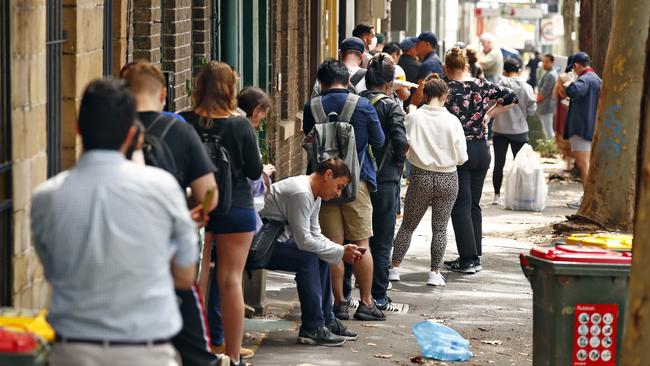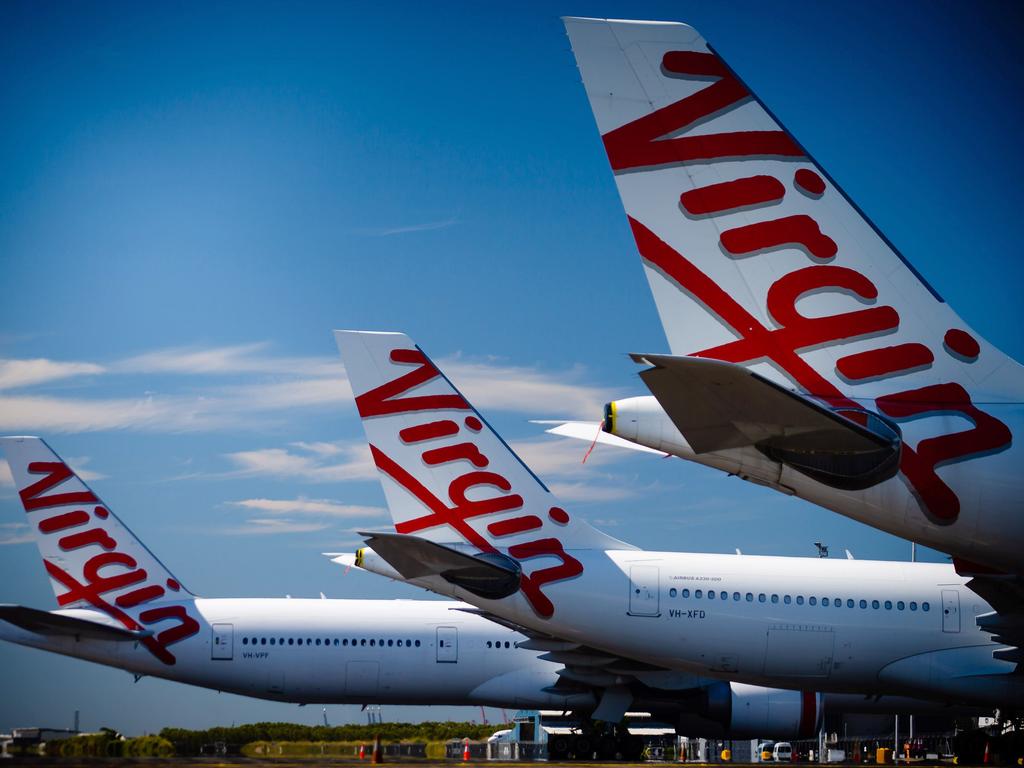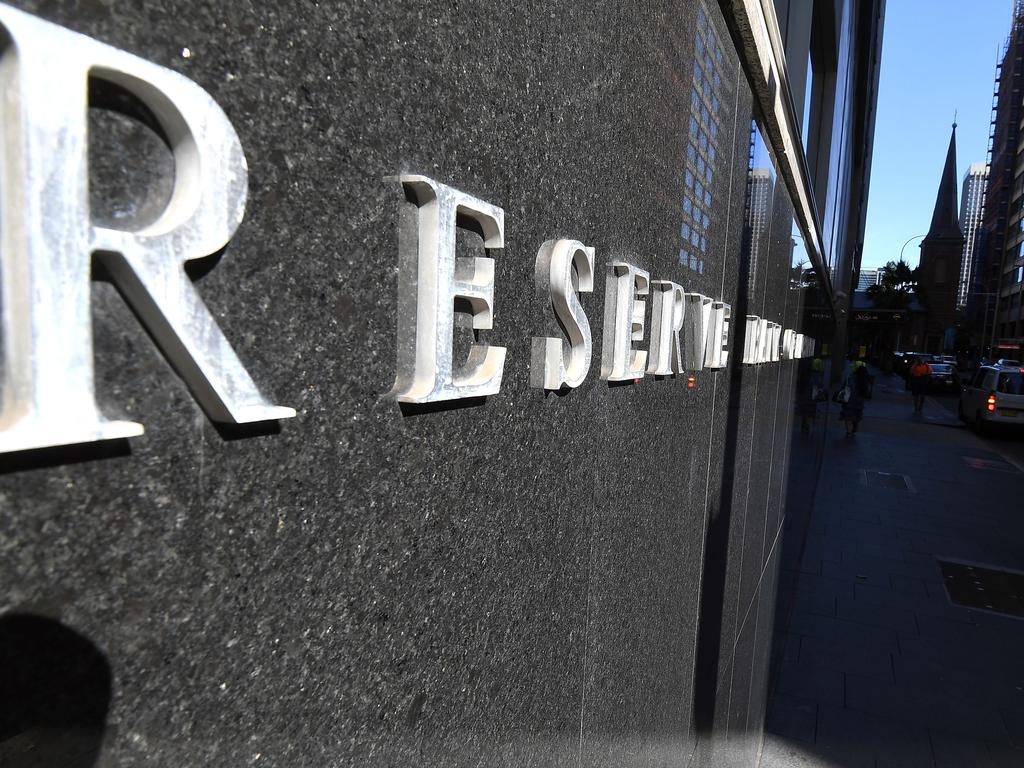No one knows when this will end

I had said that if the 6 million people covered by JobKeeper (revised down on Friday to 3 million) plus the 1.6 million getting JobSeeker had been counted as unemployed by the ABS last week, the unemployment rate would not be 6.2 per cent, but 58 per cent — more than double what it got to in the Great Depression in the 1930s.
All wrong, said my correspondent (who asked not to be quoted). His business had qualified for JobKeeper because turnover had fallen more than 30 per cent, but he had not been planning to sack anyone: “In my case there are ZERO unemployed people but they are all effectively receiving JobKeeper.”
So I rang him up. Would he have been able to keep them employed without JobKeeper? That hadn’t come up, he said. A lot of his revenue comes from a contract with the state government, and even though he hasn’t been doing that work, the money kept coming, in accordance with the contract. Staff employed on non-government work that has disappeared are supported by JobKeeper, and in fact some of them have had a pay rise because they were getting less than $1500 a fortnight, which is what they get now.
So two governments have been keeping this bloke’s business alive and without them his 100 employees would be on JobSeeker, not JobKeeper, and his business would in mothballs.
My point stands: most of Australia’s economy is on temporary government life support, and a lot of businesses and individuals are also being carried by their banks, also temporarily.
As a result the current 6.2 per cent unemployment number, and the official forecast of 10 per cent, is a nice fiction, and those forecasting positive GDP growth and falling unemployment in the September quarter, after a really bad June quarter, have got to be kidding.
The JobKeeper payment of $1500 per fortnight ends on September 27. The $550 extra dole per fortnight runs out on October 27. In addition to that close to 500,000 mortgagees are being allowed to defer their loan repayments — adding it to the debt — which also ends in six months. Thousands of businesses are also capitalising the interest on their debt, also for six months.
So everyone is agreed that it will be over in six months — that we’ll be back to 5.2 per cent unemployment, everybody will be paying full mortgage principal and interest and all the businesses previously closed will be reopened and thriving as they were in February. The sharemarket agrees.
And so much has happened since James Kwan became the first Australian to die of COVID-19 on March 1, who can say that’s wrong? Can we be sure of anything?
The world has completely changed in three months. Maybe it will change back in four months from now, and maybe it really will all be over in time for the JobSeeker supplement to finish on October 27, three days after we have all crammed into the MCG to watch the AFL Grand Final (at night) in a glorious post-COVID piss-up and barrack.
Really? The medical experts tell us we won’t sitting next to each other and breathing each other’s breath until a vaccine has been found and distributed, so the industries that rely on crowds (sport and mass entertainment) and even small crowds (bars and restaurants) won’t be thriving.
Will clothing stores be back by October 27 or just trading online? Trains and trams? International travel? How much of the economy will remain closed in 2021?
Immigration, both permanent and temporary, is in the process of collapsing; how long before the construction industry is back to normal? And what about universities that rely on foreign students?
Sharemarket spurt
The sharemarket had a spurt the other day after Moderna Inc of Boston announced successful phase one trials for its coronavirus vaccine candidate, mRNA-1273.
Phase one!? See you in two or three years for the end of Phase three.
Seriously, any government, state or federal, and any bank that does not have a plan B for the continuation of economic support after October is being careless.
Deep in the JobKeeper legislation, in the second last paragraph in fact, there’s a hint at Plan B. It says: “the Commissioner must not pay an amount by way of a JobKeeper payment after September 30, 2021”.
The first part of the legislation states that it ends on September 27, 2020, but apparently the absolute time limit is 12 months later.
What next?
That first deadline is now four months off. What if, as seems quite likely, a million or two people and their families are still relying on JobKeeper and/or mortgage deferrals on September 27 because their employer services AFL crowds, or is a university or a construction company, or Qantas or Sydney Airport, and can’t pay them?
Here’s what if: when JobKeeper ends, they will go on JobSeeker plus coronavirus supplement, so a $192.30 per week drop in the welfare wage to $557.70, which is good for the federal budget but not for their mortgage repayments, and they still won’t be counted as unemployed unless they’re “actively looking for work”.
That money lasts another month: the JobSeeker coronavirus supplement ends on October 27. This time their weekly government welfare wage more or less halves to $282.85 per week, or $40 a day, which is even better for the budget, but they really have to start looking for a job because you can’t live on that and you certainly can’t service a mortgage, which means the house will have to be sold unless the bank agrees to keep carrying you.
So the unemployment rate will spike in November and house prices will fall. These things will be reported to the nation in early December. Christmas shopping? Forget it. This is all speculative, of course, because as discussed, the world is changing by the day.
COVID-19 has more or less been eradicated in Australia — the number of new cases this week has been negligible — but the most important statistic for the economy is not the number of cases, but the distance we have to, or want to, stay away from each other until there’s a vaccine.
Alan Kohler is editor in chief of Eureka Report







I was contacted this week by the owner of a small business in regional Australia, who wanted to tell me I’d got it all wrong about the JobKeeper payments.